Text
Unlocking the Secrets of Energy Savings: Expert Tips
Are you tired of paying exorbitant electricity bills every month? Do you want to reduce your carbon footprint and conserve energy? Energy audits are the first step towards identifying areas of improvement in your energy consumption. An energy audit can help you identify inefficiencies and provide recommendations on how to optimize your energy usage. In this blog, we will unlock the secrets of…
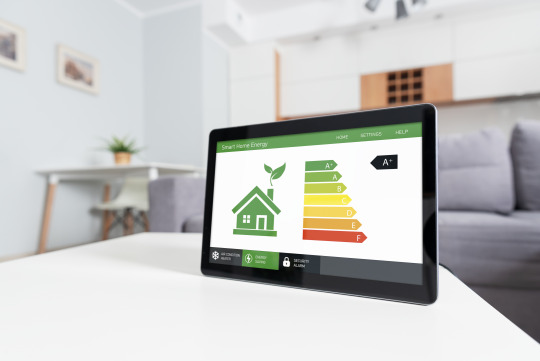
View On WordPress
0 notes
Text
Process Consultant: Your Key to Efficient Manufacturing
Introduction
As a manufacturing unit, you are always looking for ways to improve efficiency and reduce costs. One key area that often gets overlooked is the process of production. This is where a process consultant comes in - an expert who can help streamline your processes, reduce waste and save on water and energy bills. In this blog, we will explore how a process consultant can benefit your manufacturing unit by identifying inefficient processes, overcoming common challenges and implementing changes to achieve efficiency goals. We will also provide you with insights into what to look for when hiring a process consultant, as well as successful case studies of process consulting in paper manufacturing units. Finally, we will answer some frequently asked questions about process consulting for manufacturing units so that you can make an informed decision for your business.
How a Process Consultant (Energy or Water Conservation Consultant) Can Help You Reduce Water and Energy Bills
Consultants adept at identifying manufacturing inefficiencies can help reduce excessive water and energy consumption. Through tailored expertise in resource conservation, they analyze workflows and recommend improvements for optimized resource usage. By implementing these changes, long-term cost savings and environmental sustainability are achieved.
Identifying Inefficient Processes: Why is it Important?
Identifying inefficiencies in your manufacturing processes is crucial for improving productivity and reducing costs. A process consultant can analyze your workflows, pinpoint areas of inefficiency, and help streamline operations. By addressing these inefficiencies, you can optimize resources, eliminate bottlenecks, and achieve efficiency goals.
Challenges Faced by Manufacturing Units and How a Process Consultant/Paper Mill Consultant Can Help
Manufacturing units often encounter inconsistencies in workflows and a lack of transparency, which can hinder their efficiency. A process consultant brings valuable insights and offers effective solutions to address these challenges. By promoting collaboration among team members and stakeholders, consultants facilitate problem-solving and streamline operations. Through the implementation of process management strategies, consultants identify areas for improvement and implement changes that lead to enhanced efficiency and productivity.
The Process Consulting Process: Steps Involved
The process consulting process typically involves three key steps: assessing, developing, and implementing. Assessing your current processes is the first step in identifying areas for improvement. Developing a plan for efficiency improvement involves analyzing data and identifying opportunities for optimization. Implementing changes to achieve efficiency goals requires collaboration with stakeholders and effective project management. Process consultants guide you through each step, ensuring a smooth and successful consulting process.
Step 1 - Assessing Your Current Processes
Assessing your current processes involves gathering data and analyzing workflows. Process consultants utilize various techniques like interviews and data analysis to assess your processes. They identify bottlenecks, inefficiencies, and areas for improvement during this assessment phase. Assessing your current processes provides a foundation for developing an efficient plan of action. By working with a process consultant, you can gain valuable insights into your current processes and their potential for improvement.
Step 2 - Developing a Plan for Efficiency Improvement
Developing a plan for efficiency improvement involves analyzing the data from the assessment phase. Process consultants utilize their expertise to identify optimization opportunities and create a customized plan. The plan may include implementing new workflows, optimizing resources, or introducing automation. Consultants ensure alignment with efficiency goals and set the stage for successful implementation.
Step 3 - Improvements to Achieve Efficiency Goals and remove inconsistencies
To achieve efficiency goals, close collaboration with stakeholders and team members is crucial. Process consultants serve as facilitators, guiding the implementation process and addressing any obstacles that arise. Effective communication ensures everyone is on board with the changes. Monitoring and adjusting workflows in the long run are essential to align them with efficiency goals. With a process consultant's support, you can smoothly transition to improved processes and achieve your desired outcomes.
What to Look for When Hiring a Process Consultant/Energy Conservation Consultant
When hiring a process consultant, it's crucial to consider their skills and expertise. Experience in your industry and a successful track record are key indicators of their ability to deliver results. Additionally, evaluate their knowledge of business process management and familiarity with your specific challenges. A consultant who can navigate group dynamics and facilitate collaboration among stakeholders is essential for a successful engagement.
HREF.LI
Required Skills and Expertise
To ensure a successful process consulting engagement, process consultants should possess strong analytical skills to assess and analyze current processes. Their expertise in business process management and knowledge of industry best practices play a crucial role in identifying areas for improvement. Effective communication and facilitation skills are also essential for guiding teams through the consulting process. Additionally, consultants should be able to interpret and analyze hard data, providing transparency and demonstrating a commitment to achieving your goals.
Evaluating Experience and Track Record
When considering a process consultant, it's crucial to evaluate their experience in similar industries. Look for consultants with a proven track record of successful process improvement initiatives. Client testimonials and case studies can provide valuable insights into their past accomplishments. Additionally, assessing their ability to adapt to different organizational cultures is important. By thoroughly evaluating their experience and track record, you can confidently make an informed decision when hiring a consultant.
Frequently Asked Questionts
Who is an energy conservation consultant and how can he benefit manufacturing units?
An energy conservation consultant helps manufacturing units lower their energy consumption and costs. They analyze energy usage and identify areas for savings without impacting production quality. Consultants benefit businesses by reducing carbon footprint, increasing efficiency, saving money on energy bills, ensuring environmental compliance, and enhancing reputation as a socially responsible business.
How do water conservation consultants identify and address inconsistencies in manufacturing workflows?
Water conservation consultants analyze water usage patterns in manufacturing facilities to identify and address inconsistencies. They assess water consumption data, identify areas of inefficiency, and evaluate current conservation measures. Consultants then recommend solutions to improve workflows and reduce water waste, which may involve implementing new technologies or processes, providing employee training, or installing water-conserving equipment like low-flow fixtures.
What role do business process consultants play in improving team dynamics within manufacturing units?
Business process consultants play a vital role in enhancing team dynamics within manufacturing units. By analyzing the current processes and identifying areas for improvement, they can develop strategies to streamline operations and optimize workflows. This can result in better communication between team members, increased efficiency, and improved collaboration. Additionally, consultants can provide training and support to help employees adapt to new processes and technologies, ensuring that everyone is on the same page. Ultimately, these efforts can lead to a more productive and cohesive team, which can have a significant impact on overall business performance.
How can process consulting help streamline business processes and improve overall productivity?
Process consulting is crucial for streamlining business processes and boosting productivity. By leveraging these services, businesses can identify inefficiencies, develop customized solutions, and optimize their workflow. Process consulting experts closely analyze existing processes to identify bottlenecks and redundancies. They then create tailored solutions to streamline the workflow. Additionally, process consulting helps implement best practices and industry standards, ensuring consistent procedures and technology usage. This enhances efficiency, reduces errors, and increases productivity. Overall, process consulting delivers significant benefits, optimizing workflow and driving long-term success for businesses of all sizes.
Why is it important to choose the right consultant for your manufacturing unit's process improvement needs?
Choosing the right consultant for your manufacturing unit's process improvement needs is crucial because it can significantly impact the success of your business. A good consultant brings expertise, experience, and objectivity to the table, identifying areas for improvement and proposing effective solutions. They can also help you implement these solutions seamlessly, ensuring minimal disruption to your operations. On the other hand, a poor consultant can lead to wasted time, money, and resources, potentially harming your business in the long run. Thus, selecting the right consultant who understands your specific needs and has a proven track record in implementing successful process improvements is critical for achieving your goals.
Conclusion
In conclusion, hiring a process consultant can significantly impact the efficiency and profitability of your manufacturing unit. By identifying inefficient processes, overcoming common challenges, and implementing changes to achieve efficiency goals, a process consultant can help reduce water and energy bills while improving overall operational performance. When hiring a process consultant, it is important to consider their skills, expertise, and track record of successful implementations. Several case studies have demonstrated the positive outcomes of process consulting in paper manufacturing units. If you have any questions about process consulting for your manufacturing unit, refer to our frequently asked questions section for more information.
Source: sarkengg.in
#processcontrol#process optimization#efficiency#product design#manufacturing#economy
0 notes
Text
Process Design 101: A Comprehensive Guide for Success
Process design is a fundamental component of business success. It involves identifying and improving processes to create a more efficient and productive organization. This comprehensive guide covers everything you need to know about process design, from the key elements to its importance in various industries. We will also discuss the objectives of effective process design, common challenges faced in process design, and strategies for overcoming them. Additionally, we will delve into the tools and methodologies used in process design and how they can contribute to successful project outcomes. Whether you are a business owner or an aspiring entrepreneur, understanding the principles of process design can help you achieve your goals efficiently and effectively. Let's dive into this guide to learn more about how you can use process design to optimize your organization's success.
Understanding Process Design
Effective business process improvement begins with individual steps in process design. This involves creating new processes and mapping out clear procedures for the design process, ultimately aiming to achieve specific goals. Process consulting plays a vital role in problem-solving and contributes to consistent and efficient production processes. Incorporating web design and user experience elements, along with graphic design and BPM (Business Process Management), enhances the organisation's process design.
The Role of Process Design in Business Success
In ensuring a transparent chain of responsibility, process design aligns production processes with business objectives. Technical consulting plays a crucial role in redesigning business processes, while process design documentation aids in operations management, resulting in better outcomes at an affordable cost.
Key Elements of Process Design
Involving the creation of a new workflow, process design requires visualization of the business process. Key to effective process design is automation, with process mapping being its initial step. Clear templates aid in clarifying the design process, enhancing user experience and efficiency. The inclusion of individual steps and new process can greatly contribute to the graphic design, web design, BPM, and organization of the overall process map.
The Importance of Process Design in Various Industries
Efficient process design is indispensable for enhancing production processes and ensuring better outcomes in various industries. Whether it's creating a new process, optimizing a web design, or improving user experience, individual steps within the process design play a critical role. From graphic design to organization, each new process requires careful planning and implementation. Process maps and BPM (Business Process Management) are crucial tools that ensure a transparent chain of responsibility and streamline operations management across different industries.
Process Design in Chemical Industries
Efficient production in the chemical industry is ensured through streamlining chemical production processes. This involves revising existing production processes and aligning workflow with the help of technical consulting. The ultimate objective of process design is consistent and reliable results.
Process Design in Polymer Industries

Efficient polymer production relies on meticulous process design, which involves revamping manufacturing processes. Thorough documentation is essential in this industry to ensure optimal outcomes. Process design consulting facilitates the automation of polymer production, aiding organizations in achieving their production objectives. Emphasizing individual steps, a new process, and process map in polymer industries contributes to streamlined operations and improved user experience. This approach aligns with the organization's BPM strategies, ultimately enhancing production efficiency and quality.
Process Design in Sugar Industry

Efficient and cost-effective sugar production is the primary goal of process design within the sugar industry. This involves visualizing the entire sugar production process and creating comprehensive documentation to ensure clarity in operations. Technical consulting plays a crucial role in aligning the workflow, ultimately resulting in consistent and affordable sugar production. The objective is to streamline individual steps, establish a new process map, and enhance the overall user experience. This approach integrates web design and graphic design to optimize the BPM and organization of the sugar production process.
Process Design in Dye and Paint Industry
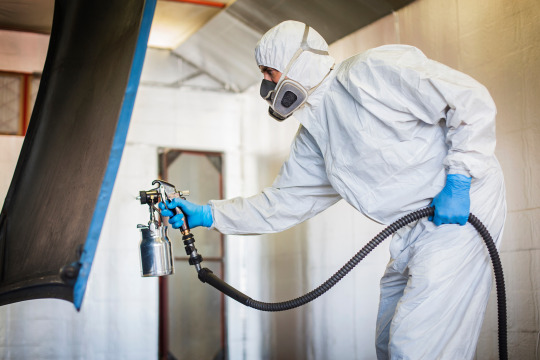
Streamlining the production of dyes and paints involves creating clear procedures for the production process. It ensures visualization of production processes and supports alignment of workflow in the industry. This results in consistent and cost-effective production. Technical consulting plays a crucial role in aligning the workflow, ensuring the efficient production of dyes and paints.
Process Design in Paper Industry
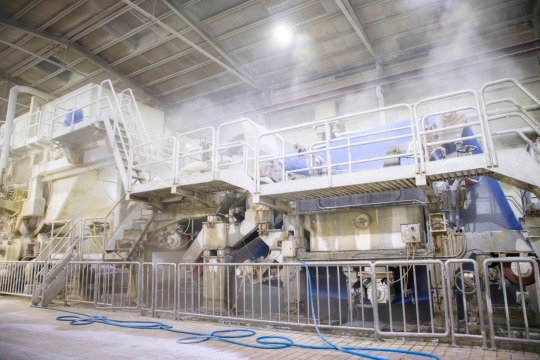
Efficient and consistent production of paper is the goal of process design in the paper industry. This involves documenting the paper production process and aligning workflow through process consulting. The result is the affordable production of high-quality paper, achieved by visualizing the paper production processes. Utilizing individual steps to streamline the new process and creating a process map enhances the organization's efficiency and user experience.
Process design in Rubber Industry
Optimizing the production of rubber products involves revising existing processes to ensure consistent efficiency. Technical consulting plays a crucial role in automating rubber production, while process design documentation provides clarity throughout the production process. By employing individual steps and new processes, the rubber industry can achieve cost-effective and high-quality production. This includes the use of process maps, web design, and user experience to streamline and visualize production processes, ultimately enhancing the overall organization of rubber production.
Objectives of Effective Process Design
Aligning operations management and business processes is essential for consistent results. Mapping the workflow ensures clarity in production processes, while efficient design yields better outcomes at an affordable cost. Emphasizing clear procedures and documentation as best practices, effective process design becomes the first step towards problem-solving in new product development. This approach drives individual steps, optimizes user experience, and supports web design for seamless process mapping.
Normalizing Outcomes
Through promoting transparent responsibility chains, process design ensures normalized outcomes. Visualization in process design plays a crucial role in achieving consistent results, while process consulting guarantees alignment with specific goals. The individual steps in the process design offer clarity to stakeholders, enhancing understanding and collaboration. Redesign, automation, and alignment are integral aspects of implementing new processes, ensuring efficiency and optimal performance. Embracing these elements is paramount in achieving successful project outcomes.
Encouraging Efficiency
Encouraging efficiency involves streamlining operations through a cohesive workflow and leveraging technical consulting for production process redesign. Implementing process design templates and revisions ensures efficient business processes, aiming for clear procedures, effective automation, and streamlined workflow. This concept ultimately leads to the efficient design of production processes, aligning with the NLP terms of individual steps, new process, process map, and bpm. Emphasizing user experience and graphic design further enhances the efficiency of the overall process design.
Avoiding Chaos
By transparently visualizing the workflow, process design documentation helps avoid chaos and incorporates the best practices of flowchart visualization. It sets clear procedures, ensuring organized operations management and avoids chaos in the workflow. Additionally, process design templates prevent chaos in the documentation of the design process, ultimately leading to an efficient and effective new process. This streamlined approach encourages user experience and promotes an organized and efficient web design, enhancing the overall process map.
Ensuring Accountability
Establishing and maintaining clear procedures and documentation in the process design fosters accountability among the team members. This ensures that the responsibility chain is transparent and that each individual step can be traced back to the responsible personnel. By visualizing the new process through process maps and web design, the organization can promote transparency and accountability in its operations. Furthermore, the automation of the process design leads to consistent and predictable results, further fostering accountability within the organization.
Streamlining Collaboration
Encouraging efficient workflow fosters streamlined collaboration, while process design templates institute effective collaboration. Visualization aligns the workflow for efficient processes and collaboration, and documentation fosters a transparent chain of responsibility, streamlining collaboration. Automation streamlines operations management, fostering collaboration and ensuring accountability.
Tools and Methodologies in Process Design
Process design incorporates various tools and methodologies to ensure efficiency and consistency. Utilizing process design templates and revisions is crucial for the design process, while visualization and documentation are considered best practices. Automation and flowchart visualization also play significant roles in the different steps of process design. The process design institute emphasizes clarity, revision, and automation to guarantee consistent results. Furthermore, alignment, redesign, and adherence to best practices are key aspects that contribute to the success of the design process.
Top-Down vs. Bottom-Up Process Design
In top-down vs. bottom-up process design, the automation and clarity of individual steps differ significantly. Alignment and redesign also show distinctive differences between the two approaches. Additionally, process design templates and flowchart visualization vary, impacting the new process and user experience. Furthermore, documentation and revision demonstrate unique characteristics in each approach, affecting graphic design and BPM. Notably, visualization and best practices play a crucial role in enhancing the organization's process map and web design.
Business Process Design Tools
Employing business process design tools involves utilizing process design institute revision, automation, and alignment. These tools enable the enhancement and optimization of processes, ensuring operational efficiency. Additionally, process design documentation, flowchart visualization, and redesign are pivotal in streamlining operations and amplifying user experience. Adhering to process design templates, clarity, and best practices further empowers organizations to innovate and implement new processes effectively. Overall, these tools play a crucial role in fostering continuous improvement and organizational success.
Challenges in Process Design and Strategies to Overcome Them
Challenges often arise with process design documentation and flowchart visualization, requiring effective strategies for resolution. Additionally, process design alignment, revision, and automation encounter obstacles that demand practical solutions. The visualization and clarity of process design also pose challenges, necessitating innovative strategies to overcome them. Moreover, the utilization of process design templates, best practices, and various steps faces hurdles, highlighting the need for effective strategies in overcoming these challenges. The process design institute's revision, alignment, and redesign similarly require adept strategies for successful implementation.
Common Process Design Challenges
Efficiently achieving a specific goal entails tackling various steps within the process design. This requires ensuring consistent results and establishing a transparent chain of responsibility. Effective process design ultimately leads to better outcomes, aligning closely with operations management principles.
Strategies for Effective Problem Solving
To effectively solve problems in process design, individual steps and clear procedures are essential. Technical consulting provides best practices, while documentation and visualization aid in problem-solving. Automation plays a key role in enhancing problem-solving processes. Moreover, alignment of stakeholders is critical to achieving effective problem-solving outcomes. Implementing new processes and web design can also contribute to improving the user experience, ultimately enhancing problem-solving strategies in process design.
The Continuous Cycle of Business Process Design
The continuous cycle of business process design involves the redesign of production processes to achieve clarity in workflow. Objectives drive this continuous cycle, aided by process design templates for visualizing new workflows. The institute of process design promotes and supports this ongoing cycle in its entirety. This cycle ensures that the business processes are continuously refined and improved, allowing the organization to maintain efficiency and adapt to evolving market demands.
Maintaining and Improving Process Designs
Process design revision leads to product enhancement. A transparent chain of responsibility for maintenance is crucial in process design. Google's process design tools, along with process design templates, facilitate efficient maintenance. Additionally, process design documentation ensures clarity in maintaining process designs. The utilization of these individual steps for new processes and the implementation of process maps aid in web design, ultimately enhancing user experience and graphic design. The structured approach of BPM provides organization in maintaining and improving process designs.
Can Effective Process Design Achieve Success in Your Projects?
Effective process design plays a crucial role in achieving success in your projects. It ensures that the end result aligns with the product's concept, leading to affordable cost outcomes. Additionally, it promotes transparency and accountability through a clear chain of responsibility. By optimizing automation and efficiency, effective process design produces consistent and improved outcomes.
Frequently Asked Questions
What Are The Objectives Of Process Design?
The objectives of process design include improving efficiency, reducing costs, and increasing quality. It aims to identify bottlenecks, streamline workflows, and ensure consistency in output. Process design also helps organizations achieve better resource utilization and improved customer satisfaction.
Why is it important to understand process design?
Understanding the importance of process design is crucial for business success. It improves efficiency, eliminates bottlenecks, ensures consistency, and helps adapt to market changes.
What Is The Product Process Matrix?

The Product Process Matrix is a tool that helps analyze the relationship between product type and production process. It categorizes processes into Project, Job shop, Batch, and Continuous based on product characteristics. Understanding this matrix can streamline processes and improve efficiency.
How do you determine which processes need to be redesigned?
To determine which processes need to be redesigned, you can identify bottlenecks, delays, or errors in the current processes. Analyze feedback from customers and employees for areas that need improvement. Compare industry best practices with your existing processes and prioritize based on their impact on business goals.
Conclusion
In conclusion, process design plays a crucial role in the success of businesses across various industries. It ensures efficient and streamlined operations, promotes collaboration, and enhances accountability. By understanding the key elements of process design and using the right tools and methodologies, businesses can overcome challenges and achieve their objectives. It is important to continuously evaluate and improve process designs to adapt to changing market dynamics and maintain a competitive edge. Effective process design can significantly impact the success of your projects, ensuring optimal outcomes and driving business growth. We encourage you to share your thoughts and experiences with process design in the comments below.
To achieve efficient production for your manufacturing unit do consult and hire SARK Engineers & Consultants.
#process control#process design#consulting#paper industry#sugar industry#paint industry#polymer industry
0 notes
Text
Process Design 101: A Comprehensive Guide for Success
Some questions need an answer...
Why consulting is important for product design?
Why is product matrix plays an important role?
Get to know with us.
#productdesign #productmatrix #processdesign #consulting #manufacturing #industry
Process design is a fundamental component of business success. It involves identifying and improving processes to create a more efficient and productive organization. This comprehensive guide covers everything you need to know about process design, from the key elements to its importance in various industries. We will also discuss the objectives of effective process design, common challenges…

View On WordPress
0 notes
Text
Capital Cost Savings in Paper Industry Design
Carefuldesigns can save a lot of CAPEX and OPEX. Lt us understand how this all can happen.
#industry #processdesign #engineering #paperindustry
The paper industry plays a vital role in our everyday lives, providing us with various products such as paper towels, tissue paper, and packaging materials. Behind the scenes, there is a complex process involved in manufacturing these paper products, and one key aspect that drives efficiency and cost savings is paper industry design. In this blog, we will explore the significance of paper…

View On WordPress
0 notes
Text
Mastering P&ID Diagrams: Essential Tips and Techniques
Introduction
In the world of engineering, P&ID diagrams are essential tools for communicating the design and operation of complex industrial processes. They are used to illustrate piping and instrumentation systems, depicting everything from flow rates and process parameters to control loops and instrumentation sensors. In this blog, we'll take a deep dive into all things P&ID diagrams. We'll start by understanding what P&ID diagrams are, the symbols used in them, and their role in paper mill design. We will also differentiate between P&ID and Process Flow Diagrams (PFD), address the limitations of P&IDs, and discuss how to overcome them in paper mill design. Lastly, we will provide tips on how to create effective P&ID diagrams for paper mill design that will help you master this essential tool in your engineering arsenal.
Understanding the P&ID Diagram
P&ID diagrams, also known as piping and instrumentation diagrams, are graphical representations of a process, displaying the major equipment of a plant facility, the interconnection of process equipment, and the characteristics of the fluid being processed. These diagrams use a set of standardized symbols to convey information about process equipment, instrumentation, control devices, valves, fittings, automation, vents, sensors, and control room equipment. Process flow, instrumentation, and control systems are represented in a clear and concise manner through the use of these symbols. P&IDs serve as a communication tool, facilitating the understanding of the process flow among different stakeholders involved in the design and operation of a paper mill. Process equipment such as heat exchangers, compressors, turbines, separators, conveyors, condensers, boilers, cylinders, and pipelines are all depicted in P&IDs, allowing for a comprehensive understanding of the process flow.
Basics of P&ID Diagrams
At the foundation of P&ID diagrams lies the representation of process equipment, instrumentation, control devices, valves, fittings, sensors, transmitters, compressors, turbines, separators, conveyors, condensers, boilers, cylinders, pipelines, vents, and control room equipment. Each symbol used in a P&ID diagram represents a specific piece of equipment, control system, or instrumentation, providing a standardized way of representing these elements. By understanding the symbols used in P&IDs, one can accurately interpret the diagram and effectively communicate the process flow. It is important to note that the symbols used in P&IDs can be industry-specific, following standards such as the ISA (International Society of Automation) symbols.
The Symbols used in P&ID Diagrams
P&ID diagrams utilize a variety of symbols to represent different process equipment, instrumentation, control devices, valves, fittings, sensors, transmitters, compressors, turbines, separators, conveyors, condensers, boilers, cylinders, pipelines, vents, and control room equipment. These symbols provide a standardized way of conveying information about the characteristics of the fluid, the control devices used, and the overall process flow. Understanding these symbols is essential for accurately interpreting the diagram and effectively communicating the process flow. Additionally, P&ID symbols can be industry-specific, adhering to standards such as the ISA (International Society of Automation) symbols.
The Role of P&ID Diagrams in Paper Mill Design
P&ID diagrams play a crucial role in the design and operation of a paper mill. They provide a comprehensive understanding of the process flow, equipment, instrumentation, and control systems, which are essential for process design. P&IDs serve as a basis for the development of process engineering specifications, ensuring the design of the paper mill meets regulatory requirements and industry standards. These diagrams also provide a foundation for hazard and operability studies (HAZOP), allowing engineers to identify potential process safety risks and implement control measures. Process equipment, heat exchangers, compressors, turbines, separators, conveyors, condensers, boilers, cylinders, pipelines, valves, fittings, sensors, transmitters, and control room equipment, among others, are all represented in the P&IDs, enabling accurate design and layout of the processing facilities. Process control, automation, instrumentation, and overall system performance are considered in the design stage, ensuring the process design meets the desired objectives.
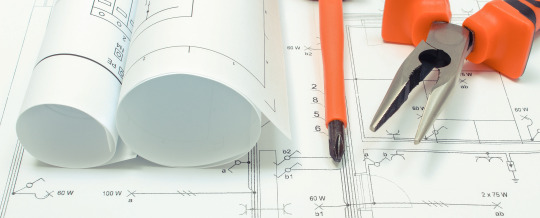
Importance of P&IDs in Process Design
The importance of P&IDs in process design cannot be overstated. These diagrams offer a comprehensive understanding of the process flow, equipment, instrumentation, and control systems. Process engineering specifications can be developed based on the information provided by the P&IDs, ensuring the design of the paper mill meets regulatory requirements and industry standards. P&IDs serve as a foundation for hazard and operability studies, allowing engineers to identify potential process safety risks and implement control measures. Process equipment, heat exchangers, compressors, turbines, separators, conveyors, condensers, boilers, cylinders, pipelines, valves, fittings, sensors, transmitters, and control room equipment, among others, are all represented in the P&IDs, enabling accurate design and layout of the processing facilities. Process control, automation, instrumentation, and overall system performance are considered in the design stage, ensuring the process design meets the desired objectives.
How P&IDs Contribute to Efficient Paper Mill Operations
P&IDs contribute significantly to the efficient operation of a paper mill. These diagrams provide a clear understanding of the process flow, equipment, instrumentation, and control systems, enabling operators to optimize process control, automation, and overall system performance. By referring to the P&IDs, operators can troubleshoot process issues, identify the source of the problem, control devices, and instrumentation involved, and implement corrective actions. Process equipment, heat exchangers, compressors, turbines, separators, conveyors, condensers, boilers, cylinders, pipelines, valves, fittings, sensors, transmitters, control room equipment, and overall system layout, as depicted in the P&IDs, facilitate the smooth operation of the paper mill. The process flow, instrumentation, control devices, and interconnection of equipment, as represented in the P&IDs, enable operators to have a holistic view of the process, ensuring the overall system operates efficiently.
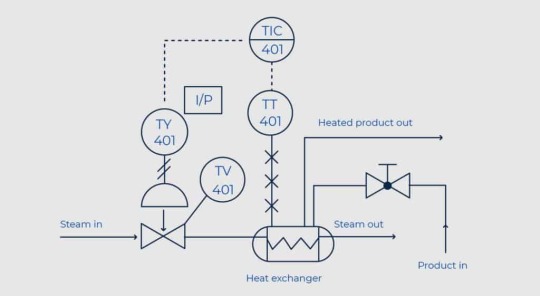
Differentiating Between P&ID and Process Flow Diagram (PFD)
P&ID diagrams and Process Flow Diagrams (PFDs) are both used in the design of a paper mill, but they serve different purposes and provide different levels of detail.
Defining Process Flow Diagrams (PFD)
A Process Flow Diagram (PFD) is a basic representation of a process, including the major equipment, piping, and instrumentation. It outlines the process flow and shows how each component is connected, providing a high-level overview of the process.
Key Differences between P&ID and PFD
While a P&ID diagram provides a more detailed representation of the process, showing the piping, valves, instruments, equipment, control systems, and interconnection of equipment, a PFD focuses on the flow of materials through the system. P&IDs include information on control loops, junctions, and other details that are not included in a PFD. P&IDs are used for designing, operating, and maintaining the process, while a PFD is used to understand the overall process flow. P&IDs are essential for the design and layout of the system, while a PFD is used for troubleshooting and analyzing the process.
Limitations of P&ID Diagrams
P&ID diagrams, although a valuable tool in the design and operation of a paper mill, have their limitations. It is important to be aware of these limitations to ensure the accurate representation of the process flow.
Understanding the Limitations
Some of the limitations of P&ID diagrams in paper mill design include the challenge of representing complex process flow in a diagram, the difficulty of capturing the interconnection of process equipment accurately, ensuring compliance with regulatory requirements while creating the diagram, and the potential risks of errors or omissions in the diagram due to the complexity of the process flow.
Overcoming these Limitations in Paper Mill Design
To overcome the limitations of P&ID diagrams in paper mill design, process engineering expertise is required. Process engineers utilize their knowledge and experience to design effective P&ID diagrams, ensuring the accurate representation of the process flow, equipment, instrumentation, and control systems. Detailed process control systems can be incorporated into the diagram, special fittings and instrumentation diagrams can be used to enhance accuracy, and management of change protocols can be implemented to address process modifications. Collaboration with process industry professionals also plays a crucial role in the design of a comprehensive P&ID diagram for a paper mill.
How to Create Effective P&ID Diagrams for Paper Mill Design
Creating effective P&ID diagrams for paper mill design involves a systematic approach, starting with a process flow diagram and identifying the major equipment of the plant facility. The electrical connection of control devices should be accurately depicted, and a control room layout diagram can be created for efficient process control. Following industry specifications and documentation standards is essential during the design stage to ensure the diagram meets regulatory requirements.
What Makes a Good P&ID Diagram for Paper Mill Design?
A good P&ID diagram for paper mill design is characterized by a clear, concise, and easy-to-understand representation of the process flow, piping, instrumentation, valves, fittings, automation, vents, transmitters, compressors, turbines, separators, hazop, sensors, conveyors, condensers, boilers, cylinders, pipelines, control room equipment, and overall system layout. Proper labeling of equipment and instrumentation is crucial, and the use of industry-standard symbols, such as ISA, enhances the accuracy of the diagram design.
Conclusion
In conclusion, mastering P&ID diagrams is crucial for effective paper mill design. These diagrams serve as a visual representation of the process, allowing engineers and operators to understand and communicate complex systems. By understanding the basics of P&ID diagrams and the symbols used, you can create clear and accurate representations. P&ID diagrams play a vital role in process design, ensuring efficient operations and minimizing errors. It is important to differentiate between P&ID diagrams and process flow diagrams (PFD) to ensure clarity in communication. While P&ID diagrams have limitations, such as lack of dynamic information, these can be overcome through proper design techniques. Overall, creating effective P&ID diagrams is essential for successful paper mill design and operations.
0 notes